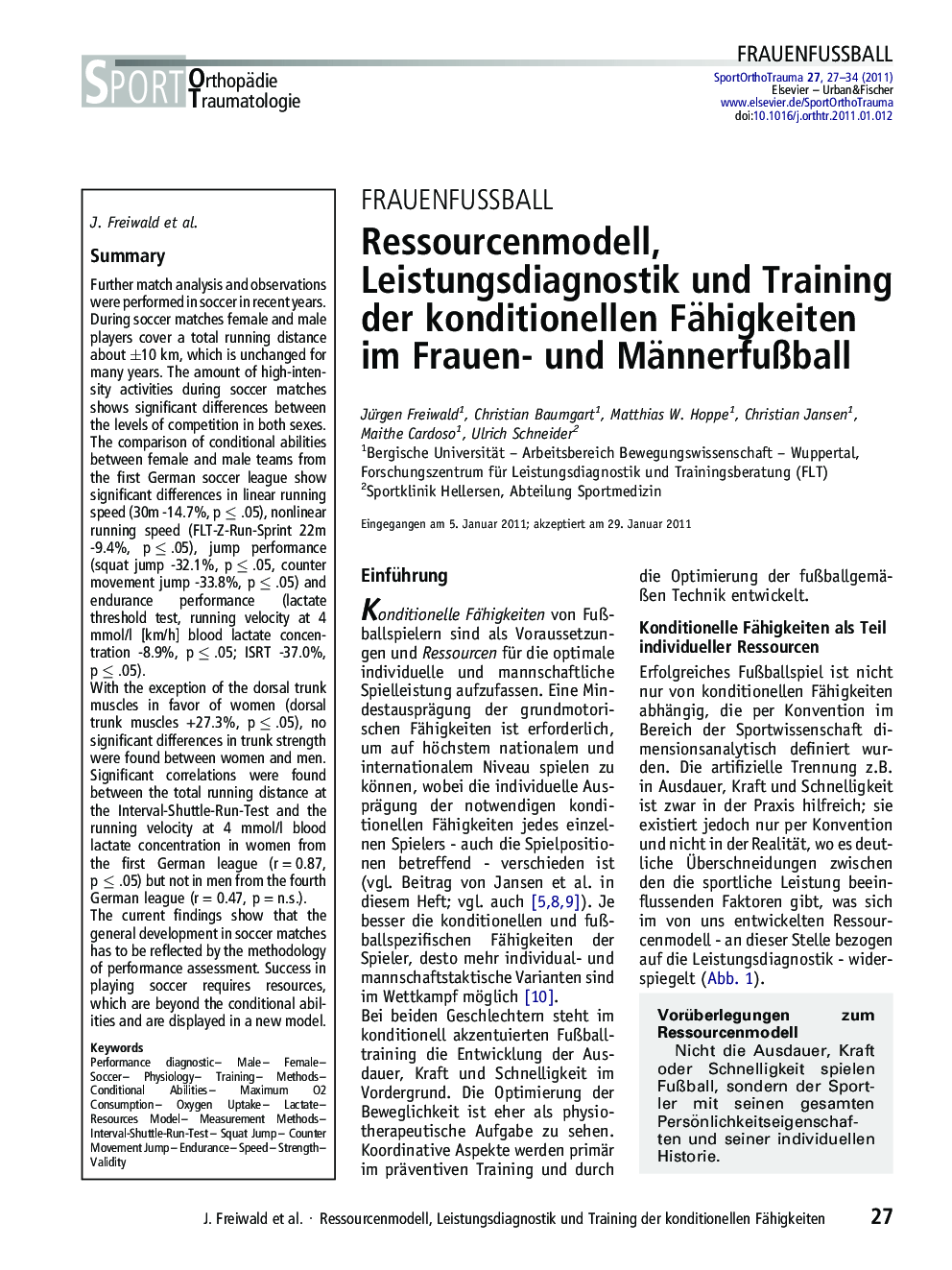| Article ID | Journal | Published Year | Pages | File Type |
|---|---|---|---|---|
| 2740815 | Sports Orthopaedics and Traumatology | 2011 | 8 Pages |
SummaryFurther match analysis and observations were performed in soccer in recent years. During soccer matches female and male players cover a total running distance about ±10 km, which is unchanged for many years. The amount of high-intensity activities during soccer matches shows significant differences between the levels of competition in both sexes.The comparison of conditional abilities between female and male teams from the first German soccer league show significant differences in linear running speed (30m -14.7%, p ≤ .05), nonlinear running speed (FLT-Z-Run-Sprint 22m -9.4%, p ≤ .05), jump performance (squat jump -32.1%, p ≤ .05, counter movement jump -33.8%, p ≤ .05) and endurance performance (lactate threshold test, running velocity at 4 mmol/l [km/h] blood lactate concentration -8.9%, p ≤ .05; ISRT -37.0%, p ≤ .05).With the exception of the dorsal trunk muscles in favor of women (dorsal trunk muscles +27.3%, p ≤ .05), no significant differences in trunk strength were found between women and men. Significant correlations were found between the total running distance at the Interval-Shuttle-Run-Test and the running velocity at 4 mmol/l blood lactate concentration in women from the first German league (r = 0.87, p ≤ .05) but not in men from the fourth German league (r = 0.47, p = n.s.).The current findings show that the general development in soccer matches has to be reflected by the methodology of performance assessment. Success in playing soccer requires resources, which are beyond the conditional abilities and are displayed in a new model.
